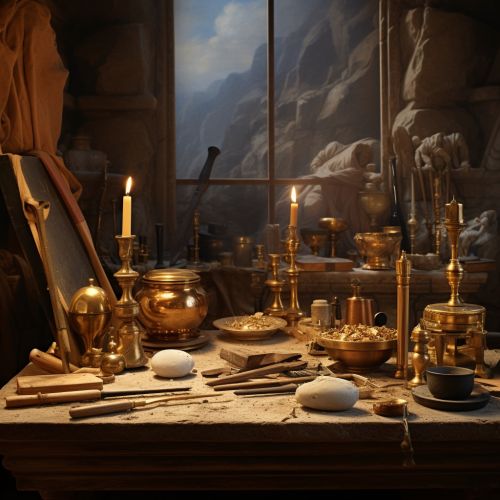Goldsmith
History
Goldsmithing, the art of creating objects from gold, has a long and storied history. The earliest evidence of goldsmithing dates back to the Copper Age, around 4500 BC, where gold objects were found in the Varna Necropolis in Bulgaria. The craft reached its peak in the Egyptian, Minoan, and Mycenaean civilizations.


Throughout history, goldsmiths have been highly respected artisans, often holding positions of prestige within society. In medieval Europe, goldsmiths were members of one of the most powerful guilds, and their work was often commissioned by royalty and the church.
Process and Techniques
Goldsmithing involves several processes, including melting, alloying, casting, shaping, soldering, and finishing. Goldsmiths often start by alloying gold with other metals to increase its strength and change its color. The alloy is then cast into an ingot or directly into the desired shape.
The goldsmith uses various tools such as hammers, anvils, and files to shape and detail the piece. The piece is then soldered, where necessary, using a torch. The final step in the process is finishing, which involves polishing and sometimes engraving the piece.
Modern Goldsmithing
Today, goldsmithing is both a craft and an art form. While many of the techniques and tools used by goldsmiths have remained the same, modern technology has introduced new methods such as computer-aided design (CAD) and 3D printing.
Goldsmiths today often work in jewelry stores, creating custom pieces for clients. Some goldsmiths also work as independent artisans, selling their work through galleries or online platforms.
Education and Training
Becoming a goldsmith requires a combination of formal education and hands-on training. Many goldsmiths start their education by attending a trade school or university program where they learn the basics of metalworking and jewelry design.
After completing their education, aspiring goldsmiths often apprentice with an experienced goldsmith. During this apprenticeship, they learn the finer points of the craft, including advanced techniques and the use of specialized tools.
Notable Goldsmiths
Throughout history, there have been many notable goldsmiths whose work has had a significant impact on the field. These include Benvenuto Cellini, an Italian goldsmith and sculptor of the Renaissance period, and Peter Carl Fabergé, a Russian jeweler best known for his Fabergé eggs.
